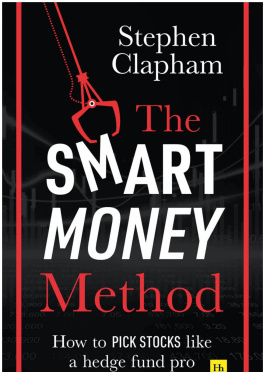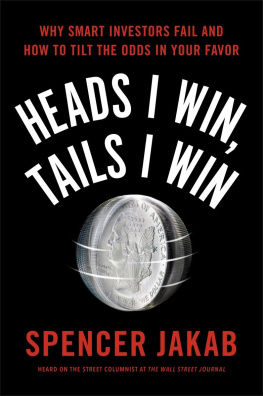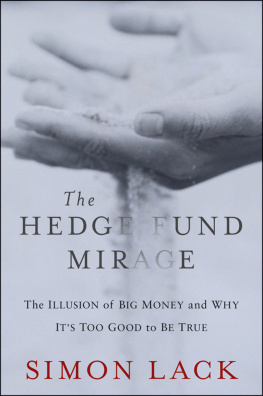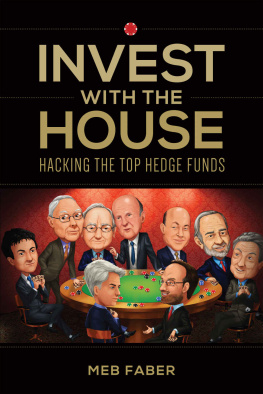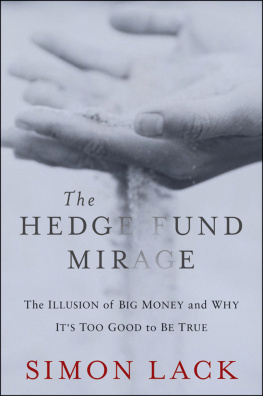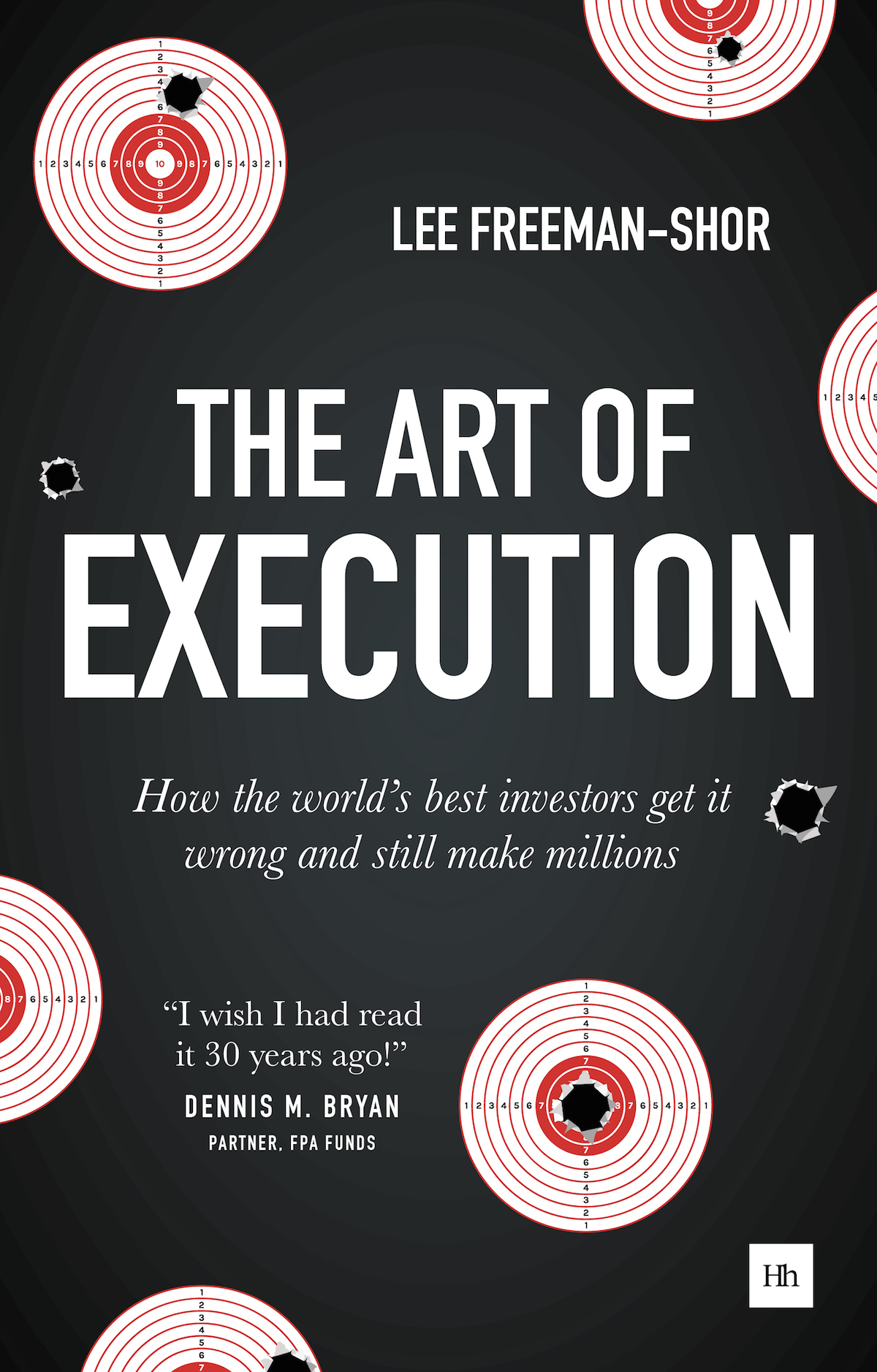The Art of Execution
How the worlds best investors get it wrong
and still make millions
Lee Freeman-Shor

For my son, Adam, and my wife, my soul mate, Michal.
I am truly blessed to be your father and husband respectively. I love you both more than words on a page can convey.
To my Mum and Dad, who are quite simply the best parents a son could wish for. I got lucky in life.
Contents
About the Author
Lee Freeman-Shor currently manages over $1bn in high-alpha and multi-asset strategies. Lee was ranked as one of the worlds top fund managers in Citywire 1000 in 2012. He has been AAA-rated by Citywire, Gold-rated by S&P Capital IQ fund research and is Bronze-rated by Morningstar OBSR. He has been at Old Mutual Global Investors since October 2005 and was previously Co-Head of Equity Research.
Prior to joining Old Mutual Global Investors, Lee worked for Schroders, Winterthur and in private client wealth management and has over 16 years investment experience. Lee holds the Investment Management Certificate and has an LLB (Hons) Law degree from Nottingham Trent University. He currently lives in Maidenhead, England, with his wife Michal and their son Adam. In his spare time he enjoys going to the movies and having fun with his family.
Introduction
I hope you werent planning on a long career in the investment industry.
My colleague gave me a look of concern as he finished reviewing my research an investigation into the performance of some of the very best City and Wall Street investors.
Make sure you double check your findings, he continued. If theyre correct, you have made a discovery that will shock the public and make waves throughout the financial world.
I double-checked my findings. The results were confirmed. This book was born.
The wow moment
Over a period spanning more than seven years, from June 2006 to October 2013, I examined 1,866 investments, representing a total of 30,874 trades made by 45 of the worlds top investors all of whom I had the privilege of managing as part of my job as a fund manager at Old Mutual Global Investors.
What was unique about these 1,866 investments was that each one of them represented the best money-making ideas of these investment titans during those seven years.
I had given each of these leading investors between 20 and 150 million dollars to invest for my Best Ideas fund, with strict instructions that they could only invest in ten stocks that represented their very best ideas to make money.
The rationale for doing so was the simple belief that the greatest possible returns on capital could be achieved by hiring the best investors in the world and getting them to invest in their best ideas.
These were ideas that they had significant confidence in, and were often the result of hundreds of hours of research by some of the smartest people on the planet.
Given all this, I was sure that I would make a lot of money.
It might surprise you, then, to be told that most of their investments lost money.
When the best fail
Personally, I was shocked to discover that only 49% (920 investments) of the very best investment ideas made money.
Even more shocking was that some of these legendary investors were only successful 30% of the time.
I had employed some of the greatest investment minds on the planet and asked them to invest in only their very best, highest-conviction, money-making ideas. And yet the chances of them making money were worse than tossing a coin and betting on heads coming up every time.
[A]fter studying forecasting day and night for over 30 years Ive yet to find anyone who could consistently and reliably forecast an uncertain future.
Ned Davis
What really surprised me wasnt the discovery that so many investing legends earning tens of millions every year and appearing in annual rich lists had feet of clay. What really fascinated me was the fact that, despite some of them only making money on one out of every three investments, overall almost all of them did not lose money . In fact, they still made a lot of it.
This begged the question:
How are they making lots of money if their ideas are wrong most of the time?
How are most of these investment legends able to be wrong more often than they are right and still make incredible profits?
What was the secret of their success if it wasnt down to an elusive Midas touch?
This question made me burn with curiosity. It led me to analyse every single trade they had made over a seven-year period to try and uncover their secrets. I simply had to know what it was they did.
The results of my investigation are revealed in this book.
In the process I discovered that successful stock market investing is not about being right per se far from it. Success in investing is down to how great ideas are executed.
I have come to understand that if successful property investing is all about location, location, location, success in equity investing is all about execution, execution, execution.
Vision without execution is hallucination.
Thomas Edison
I have also learned that investing need not be the preserve of the so-called experts. Until now, the skill of good execution in investing has been largely hidden from the general public. This has led to a widespread false belief that great investors are great because they have ideas that at the time elude the rest of us mere mortals.
This couldnt be further from the truth. It is why this book has been carefully written to have appeal to investors of every level, both private and professional; no specialist knowledge is required.
As you will see later in the book, you dont even have to worry about whether an investing idea works or not if you focus on how to invest in that idea: how much money you allocate to it and what you will do when you find yourself in a losing or winning position.
Of course, in some ways I am not the first person to discover this.
Leo Melamed, the pioneer behind financial futures, once said: I could be wrong 60% of the time and come out a big winner. The key is money management.
Likewise, legendary billionaire hedge fund manager Paul Tudor Jones II a man who made his fortune from investing is reported to have said that the reason for all the Wall Street success stories he knew was down to: money management, money management, money management.
And George Soros a similar self-made billionaire trader once pointed out that:
Its not whether youre right or wrong thats important, but how much money you make when youre right and how much you lose when youre wrong.
What is different about this book is that, for the first time ever, I have detailed evidence of how investment titans go about their money management.
I know what their secrets are. And soon you will too.
How this book is structured
My findings show that the key to successfully executing great ideas and making lots of money comes down to the actions you take after you have invested in an idea and find yourself losing or winning.
For that reason, I have split this book into those two scenarios.
Part I is called Im Losing What Should I Do? The chapters in this part deal with being in a situation where you have invested in a great idea and now find yourself losing money.
To help you make the right decisions at such a time I introduce you to the real-life investors who worked for me and examples of their real-life investments.





